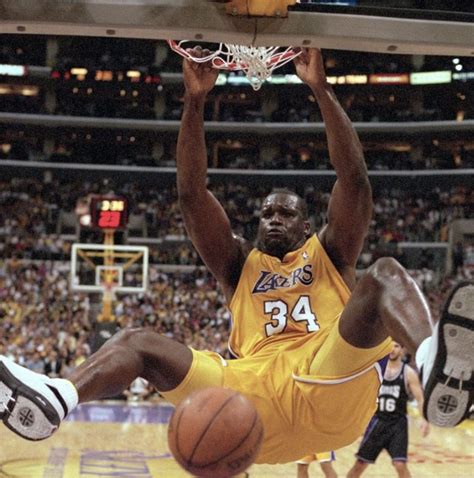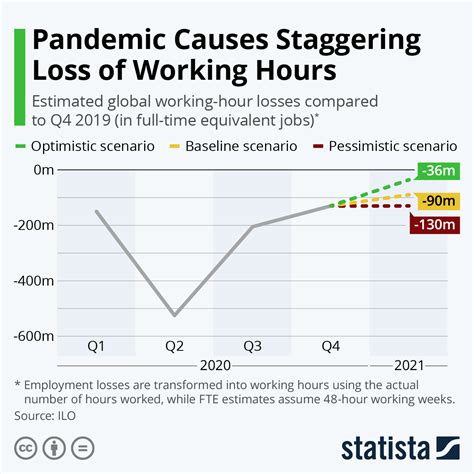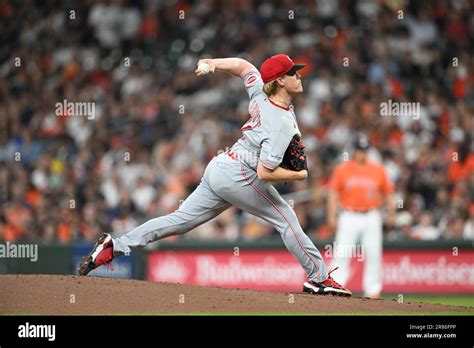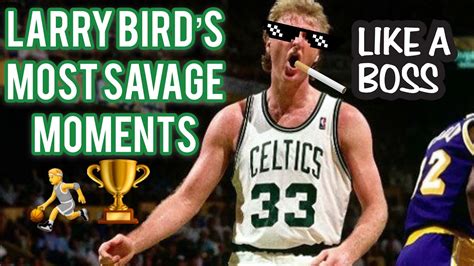
Shaquille O’Neal, the NBA Hall of Famer, has debunked a long-held belief about the lives of professional basketball players, stating there were never hordes of women waiting outside hotels, contrary to popular perception. O’Neal revealed this during an episode of his podcast, “The Big Podcast with Shaq,” challenging the widely accepted narrative of NBA stardom and its associated perks.
Shaquille O’Neal, a dominant force on the basketball court for nearly two decades, has candidly addressed one of the enduring myths surrounding the NBA lifestyle: the constant presence of women eagerly awaiting encounters with players at their hotels. In a recent episode of “The Big Podcast with Shaq,” the former Los Angeles Lakers superstar dispelled this notion, offering a grounded perspective on the realities of life in the league and the pervasive misconceptions that often accompany fame and fortune.
“People always thought that when you play for the NBA, there’s going to be lines of women outside the hotel. That is a myth,” O’Neal stated plainly on his podcast, challenging decades of assumptions and stereotypes. This statement serves as a direct counterpoint to the frequently romanticized portrayal of NBA players as being perpetually surrounded by admirers. O’Neal’s clarification aims to provide a more accurate depiction of the player experience, moving away from the sensationalized accounts often presented in media and popular culture.
O’Neal’s revelation carries weight not only because of his legendary status but also because of his extensive experience within the NBA. Spanning from 1992 to 2011, his career saw him play for six different teams, including the Orlando Magic, Los Angeles Lakers, Miami Heat, Phoenix Suns, Cleveland Cavaliers, and Boston Celtics. This long and varied career provided him with a comprehensive view of the league’s culture, the realities of travel, and the interactions players have with fans and the public.
The myth of women lining up outside NBA hotels has been perpetuated through various channels, including movies, television shows, and anecdotal stories shared among fans. These portrayals often depict NBA players as enjoying unrestricted access to admirers, contributing to an idealized and often unrealistic vision of their lives. O’Neal’s comments directly challenge this romanticized narrative, offering a contrasting view rooted in his personal experience.
It is important to note that while O’Neal debunks the myth of constant lines of women, his statement does not negate the fact that NBA players, like other celebrities, often attract attention and admiration. Rather, his commentary serves to correct the exaggerated perception of pervasive and readily available encounters. The reality is likely more nuanced, with players experiencing varying levels of attention depending on their status, location, and personal choices.
Furthermore, O’Neal’s debunking of this myth can be seen as a commentary on the broader issue of celebrity culture and the often-unrealistic expectations placed on professional athletes. The public’s fascination with the personal lives of celebrities often leads to the creation of exaggerated narratives and stereotypes that may not accurately reflect their experiences. O’Neal’s willingness to address this specific myth highlights the importance of critical evaluation and a balanced perspective when considering the lives of public figures.
The pervasive nature of this myth also raises questions about the objectification of women and the perpetuation of harmful stereotypes. The idea of women lining up to meet NBA players suggests a transactional and objectifying dynamic, reducing individuals to mere objects of desire. O’Neal’s statement implicitly challenges this dynamic, encouraging a more respectful and nuanced understanding of the interactions between players and fans.
O’Neal’s remarks resonate with broader discussions about the representation of athletes and celebrities in media. By challenging a long-held myth, he encourages a more realistic portrayal of the NBA lifestyle and the complexities faced by players navigating fame, fortune, and public attention. His comments contribute to a more informed and balanced understanding of the realities of professional sports, moving away from sensationalism and towards a more accurate representation of the player experience.
The impact of O’Neal’s statement extends beyond the immediate debunking of a myth. It also invites a broader conversation about the responsibilities of public figures in shaping perceptions and addressing harmful stereotypes. O’Neal’s willingness to use his platform to challenge ingrained narratives demonstrates a commitment to honesty and a desire to promote a more accurate representation of the NBA lifestyle.
Moreover, O’Neal’s candidness can foster a more relatable connection between fans and players. By dispelling myths and sharing personal insights, he humanizes the often-distant figures of professional athletes, making them more accessible and understandable to the public. This can contribute to a more positive and respectful relationship between fans and players, grounded in a more accurate understanding of their lives and experiences.
In conclusion, Shaquille O’Neal’s debunking of the myth of women lining up outside NBA hotels represents a significant moment in the ongoing dialogue about celebrity culture, athlete representation, and the perpetuation of stereotypes. His statement serves as a reminder of the importance of critical evaluation, balanced perspectives, and the responsibilities of public figures in shaping public perceptions. By challenging ingrained narratives, O’Neal contributes to a more accurate and nuanced understanding of the NBA lifestyle and the realities faced by players navigating fame, fortune, and public attention.
The context surrounding O’Neal’s statement is crucial to understanding its significance. The NBA, as a global entertainment phenomenon, has always been subject to intense public scrutiny and fascination. The lives of its players, both on and off the court, are often magnified and scrutinized, leading to the creation of various myths and legends. O’Neal’s willingness to address one of these enduring myths highlights the importance of separating fact from fiction and promoting a more accurate representation of the athlete experience.
O’Neal’s career itself is a testament to his enduring impact on the NBA and popular culture. Beyond his on-court achievements, he has successfully transitioned into various roles, including television analyst, actor, and entrepreneur. His continued presence in the public eye provides him with a unique platform to share his perspectives and challenge prevailing narratives. His decision to address the myth of women lining up outside NBA hotels demonstrates a willingness to use his influence to promote honesty and dispel misconceptions.
The media’s role in perpetuating myths and stereotypes cannot be overlooked. Sensationalized stories and exaggerated portrayals often contribute to the creation of unrealistic expectations and harmful narratives. O’Neal’s statement serves as a reminder of the media’s responsibility to provide accurate and balanced coverage, avoiding the temptation to sensationalize or perpetuate harmful stereotypes.
Furthermore, the broader cultural context surrounding discussions of gender and power dynamics is relevant to understanding the significance of O’Neal’s statement. The myth of women lining up outside NBA hotels often reflects underlying assumptions about male privilege and the objectification of women. O’Neal’s debunking of this myth implicitly challenges these assumptions, promoting a more respectful and equitable understanding of relationships and interactions.
In addition to O’Neal’s direct statement, his overall persona and public image contribute to the impact of his message. Known for his humor, honesty, and down-to-earth demeanor, O’Neal has cultivated a reputation as a relatable and trustworthy figure. This credibility enhances the weight of his words and makes his message more likely to resonate with a wider audience.
The reactions to O’Neal’s statement have been varied, with some expressing surprise and others acknowledging the myth’s long-standing presence in popular culture. Regardless of individual reactions, the discussion sparked by his comments has the potential to promote a more informed and nuanced understanding of the NBA lifestyle and the realities faced by players.
O’Neal’s willingness to address this specific myth can also be seen as part of a broader trend of athletes using their platforms to speak out on social and cultural issues. In recent years, more and more athletes have become vocal advocates for change, using their influence to promote equality, justice, and understanding. O’Neal’s decision to challenge an ingrained narrative aligns with this trend, demonstrating a commitment to using his voice to promote positive change.
The long-term impact of O’Neal’s statement remains to be seen, but it has the potential to contribute to a more accurate and respectful portrayal of athletes and celebrities in media and popular culture. By challenging ingrained narratives and promoting a more balanced perspective, O’Neal helps to create a space for more honest and nuanced conversations about the realities of fame, fortune, and public attention.
In conclusion, Shaquille O’Neal’s debunking of the myth of women lining up outside NBA hotels represents a significant moment in the ongoing dialogue about celebrity culture, athlete representation, and the perpetuation of stereotypes. His statement serves as a reminder of the importance of critical evaluation, balanced perspectives, and the responsibilities of public figures in shaping public perceptions. By challenging ingrained narratives, O’Neal contributes to a more accurate and nuanced understanding of the NBA lifestyle and the realities faced by players navigating fame, fortune, and public attention. His candidness encourages a more relatable connection between fans and players, fostering a more positive and respectful relationship grounded in a more accurate understanding of their lives and experiences.
The implications of O’Neal’s statement extend beyond just dispelling a myth; it touches upon the broader issues of fame, athlete representation, and the objectification of individuals within the entertainment industry. It’s a commentary on the skewed perceptions often created by media and the responsibilities of public figures to address and correct such misrepresentations.
Furthermore, it prompts a necessary reflection on the narratives we consume and the stereotypes they perpetuate. The ease with which such myths take root highlights the need for critical analysis and a discerning approach to the stories that dominate our cultural landscape. O’Neal’s revelation acts as a catalyst for a more honest and balanced understanding of the lives of NBA players, moving away from sensationalism and towards a more human perspective.
The longevity of the myth itself speaks volumes about the enduring allure of celebrity and the often-unrealistic expectations placed upon those in the public eye. The romanticized image of NBA players constantly surrounded by admirers feeds into a narrative of unchecked privilege and access. By challenging this narrative, O’Neal encourages a more grounded and realistic view of the challenges and complexities that come with fame.
O’Neal’s position as a highly respected and influential figure within the NBA community lends significant weight to his words. His credibility and experience make his debunking of the myth all the more impactful. It’s not just a random opinion; it’s a firsthand account from someone who has lived and breathed the NBA lifestyle for decades.
The discussion initiated by O’Neal’s statement also raises questions about the impact of social media on the perpetuation of myths and stereotypes. The constant flow of information and images online can easily contribute to the spread of misinformation and the reinforcement of harmful narratives. It underscores the importance of media literacy and the ability to critically evaluate the information we encounter online.
Moreover, O’Neal’s comments serve as a reminder that athletes are not monolithic entities. They are individuals with their own unique experiences, perspectives, and challenges. Generalizing about their lives based on stereotypes and assumptions is not only inaccurate but also disrespectful. O’Neal’s debunking of the myth helps to humanize NBA players and recognize their individuality.
In conclusion, Shaquille O’Neal’s candid revelation challenges a deeply ingrained myth about NBA life, prompting a broader conversation about fame, athlete representation, and the perpetuation of stereotypes. His statement serves as a valuable reminder of the importance of critical analysis, balanced perspectives, and the responsibility of public figures to shape public perceptions in a positive and accurate manner. It encourages a more informed and nuanced understanding of the realities faced by players navigating the complexities of fame and public attention, ultimately fostering a more respectful and empathetic relationship between athletes and their fans.
The discussion extends to addressing the potential pressures and temptations faced by athletes, particularly young ones entering the league. While O’Neal debunks the myth of constant lines of women, it does not negate the reality that fame and fortune can create unique challenges in navigating personal relationships and maintaining ethical boundaries.
Furthermore, the myth also carries implications regarding the portrayal of female fans. The idea of women waiting outside hotels often reduces them to mere objects of desire, overlooking their individual identities, aspirations, and reasons for admiring athletes. O’Neal’s statement indirectly challenges this objectification, encouraging a more respectful and nuanced understanding of the diverse motivations of fans.
In addition, O’Neal’s revelation offers an opportunity to discuss the importance of mentorship and guidance for young athletes entering the professional sports world. Veteran players and coaches can play a crucial role in helping young athletes navigate the challenges of fame, fortune, and public attention, providing them with the tools and support they need to make responsible choices and avoid the pitfalls of a highly visible lifestyle.
Moreover, O’Neal’s statement can be interpreted as a call for greater transparency and honesty in the portrayal of athletes and celebrities. By challenging ingrained narratives and dispelling myths, he encourages a more authentic and relatable representation of their lives, fostering a more genuine connection with the public.
The discussion also touches upon the potential for exploitation and manipulation within the entertainment industry. The pressures of fame and fortune can make athletes vulnerable to those who seek to take advantage of them, highlighting the importance of strong support systems, ethical representation, and a critical understanding of the business side of professional sports.
O’Neal’s willingness to address this specific myth can be seen as a contribution to a broader effort to promote greater accountability and ethical behavior within the sports world. By challenging harmful stereotypes and encouraging a more responsible portrayal of athletes, he helps to create a more positive and constructive environment for all involved.
In conclusion, Shaquille O’Neal’s debunking of the myth of women lining up outside NBA hotels represents a significant moment in the ongoing dialogue about celebrity culture, athlete representation, and the perpetuation of stereotypes. His statement serves as a reminder of the importance of critical evaluation, balanced perspectives, and the responsibilities of public figures in shaping public perceptions. By challenging ingrained narratives, O’Neal contributes to a more accurate and nuanced understanding of the NBA lifestyle and the realities faced by players navigating fame, fortune, and public attention. His candor promotes a more relatable connection between fans and players, fostering a more positive and respectful relationship grounded in a more accurate understanding of their lives and experiences, while addressing the potential pressures, temptations, and challenges associated with a highly visible lifestyle.
O’Neal’s debunking can also be seen as a response to the increased scrutiny athletes face in the age of social media. Every aspect of their lives, both on and off the court, is subject to instant documentation and dissemination, creating a constant pressure to maintain a certain image and avoid negative publicity. His statement can be interpreted as an attempt to reclaim some control over the narrative and provide a more accurate representation of the realities of NBA life.
Furthermore, the discussion initiated by O’Neal’s comments can help to promote a more nuanced understanding of the complexities of consent and power dynamics in relationships. The myth of women lining up outside hotels often implies a lack of agency on the part of the women involved, overlooking the importance of mutual respect, clear communication, and informed consent. O’Neal’s statement indirectly challenges this dynamic, encouraging a more ethical and responsible approach to relationships.
Moreover, O’Neal’s revelation offers an opportunity to reflect on the impact of celebrity culture on society as a whole. The intense fascination with the lives of famous individuals can often distract from more important issues and create unrealistic expectations about success and happiness. O’Neal’s statement can be seen as a reminder that athletes are human beings with their own flaws and challenges, and that their lives are not necessarily more glamorous or fulfilling than those of ordinary people.
In addition, O’Neal’s willingness to challenge ingrained narratives can inspire others to speak out against harmful stereotypes and misconceptions. His example demonstrates the power of individual voices to promote positive change and contribute to a more accurate and equitable representation of different groups and communities.
Furthermore, O’Neal’s statement can be interpreted as a call for greater empathy and understanding towards athletes. The pressures and challenges they face are often overlooked or dismissed, leading to a lack of compassion and support. By sharing his personal insights and dispelling myths, O’Neal helps to humanize athletes and foster a more empathetic connection with the public.
In conclusion, Shaquille O’Neal’s debunking of the myth of women lining up outside NBA hotels represents a significant moment in the ongoing dialogue about celebrity culture, athlete representation, and the perpetuation of stereotypes. His statement serves as a reminder of the importance of critical evaluation, balanced perspectives, and the responsibilities of public figures in shaping public perceptions. By challenging ingrained narratives, O’Neal contributes to a more accurate and nuanced understanding of the NBA lifestyle and the realities faced by players navigating fame, fortune, and public attention. His candor promotes a more relatable connection between fans and players, fostering a more positive and respectful relationship grounded in a more accurate understanding of their lives and experiences, while addressing the potential pressures, temptations, challenges, social media scrutiny, and complexities of consent associated with a highly visible lifestyle.
Frequently Asked Questions (FAQ)
1. What myth did Shaquille O’Neal debunk regarding NBA players? Shaquille O’Neal debunked the long-held belief that there are always lines of women waiting outside NBA players’ hotels. He stated that this is a myth and not the reality of the NBA lifestyle.
2. Where did Shaquille O’Neal make this statement? Shaquille O’Neal made this statement on his podcast, “The Big Podcast with Shaq.”
3. Why is O’Neal’s statement considered significant? O’Neal’s statement is significant because he is a Hall of Fame NBA player with a long and successful career. His experience and credibility lend weight to his debunking of this pervasive myth. His statements also contribute to a more realistic portrayal of athletes’ lives and challenge harmful stereotypes.
4. What are some of the implications of O’Neal’s statement? O’Neal’s statement has several implications, including:
- Challenging the romanticized image of NBA players and their access to admirers.
- Promoting a more realistic understanding of the NBA lifestyle.
- Addressing the objectification of women and the perpetuation of harmful stereotypes.
- Highlighting the responsibilities of public figures in shaping perceptions.
- Fostering a more relatable connection between fans and players.
5. What broader issues does O’Neal’s statement address? O’Neal’s statement addresses broader issues such as:
- Celebrity culture and its impact on society.
- Athlete representation in media and popular culture.
- The perpetuation of stereotypes and misconceptions.
- Power dynamics and consent in relationships.
- The challenges faced by athletes navigating fame, fortune, and public attention.









